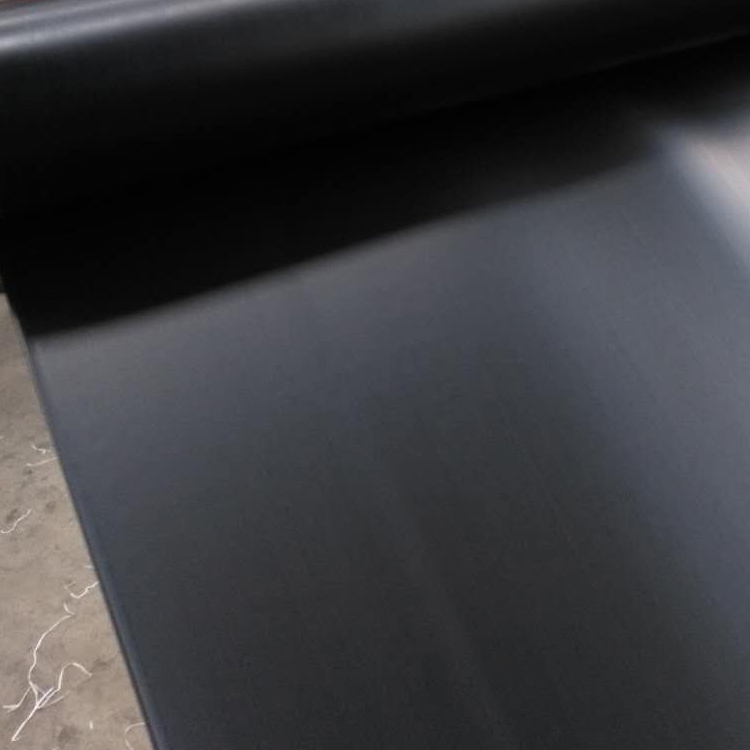

When laying geomembranes, it is not advisable to stretch them too tightly, and the stretching caused by uneven settlement should be considered. When the terrain is complex, the geomembrane should be cut appropriately according to the terrain conditions to ensure that the geomembrane is laid flat, stretched, and the joint width is uniform, facilitating joint treatment and preventing uneven settlement from damaging the geomembrane. When laying geomembranes on bank and dam slopes, it is advisable to use longitudinal laying instead of horizontal laying. According to the length of the slope, anti-skid grooves should be set up on the slope to prevent the anti-seepage layer from slipping off.
When laying and storing geomembranes, prolonged exposure to sunlight is prohibited, as the photothermal effect can cause the geomembrane material to age and degrade its physical and mechanical properties. When laying, the method of covering while laying should be adopted. Geomembranes are generally equipped with a protective layer, which can generally use compacted soil, crushed stones, cement mortar, dry block stones, mortar block stones, or concrete slabs. When local organic materials are selected as the protective layer, the corrosion resistance of local organic materials to phosphogypsum water shall be determined through tests.
The function of the protective layer is to prevent the geomembrane from being exposed to light and heat, and to protect the geomembrane from damage by humans and animals. The thickness of the protective layer should be determined through stability analysis calculation and on-site testing, and is also related to the laying equipment. Therefore, appropriate laying equipment and reasonable laying thickness should be selected to ensure that the anti-seepage layer is not crushed and the investment cost is low. In addition, sharp objects in the protective layer should be prevented from directly contacting the geomembrane.
When laying geomembrane on the bank slope, the friction coefficient between the protective layer and geomembrane should be measured, stability analysis and calculation should be conducted, and anti slip measures should be taken. Based on engineering experience, the requirements for the protective layer are summarized as follows.
1. The protective layer should have sufficient thickness to protect the geomembrane from damage;
2. The protective layer will not puncture and damage the geomembrane;
3. The protective layer shall have sufficient anti sliding stability and will not slide under the action of rainstorm;
4. The protective layer shall be resistant to phosphogypsum water erosion and atmospheric erosion.
